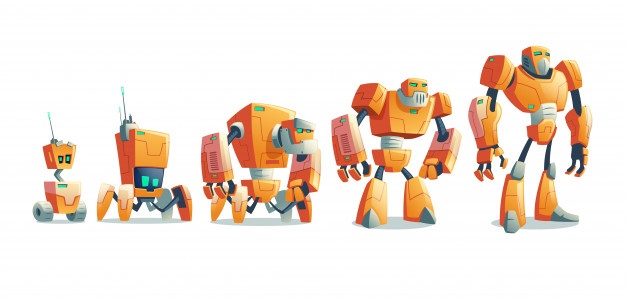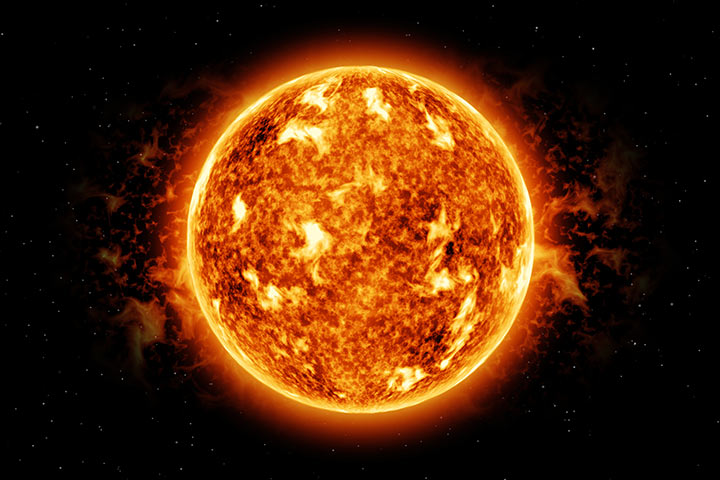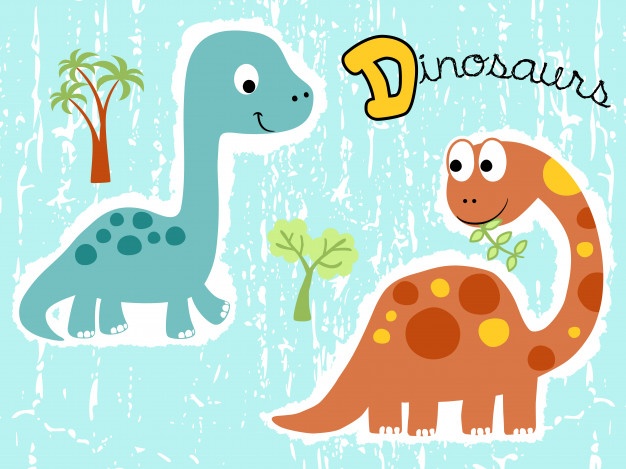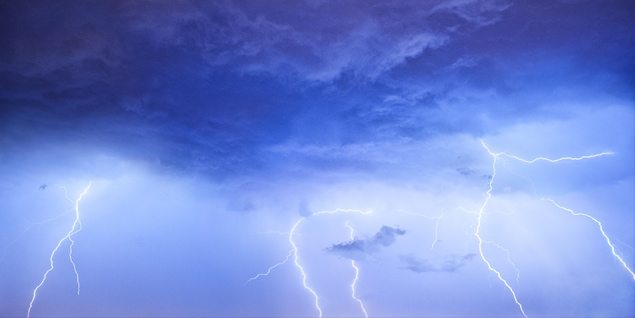Fun Facts
Robot Fun Facts
What is a robot?
A robot is a machine that can complete a series of actions automatically. Robots can be any shape or size.
How do robots move?
Electronic circuits make is able to move. These can be controlled by radio signals from a distance, a local remote or a computer.
Where does the word “robot” come from?
The word “robot” was first used in a Czech play in 1920. It comes from the Czech word for work or labour.
Can robots feel?
Robots cannot feel emotions. However, they can be built to have senses. Television cameras have light sensitive cells that can “see” for the robot. Some robots have touch-sensitive pads that enable it to pick up a delicate object without breaking it.
What is an Android?
Simply, an android is a robot shaped like a human being.
Do we use robots for dangerous jobs?
Yes. When a task is too dangerous for a human to do, a robot may be sent in to carry out a series of complicated tasks. Robots are used to deactivate booby-trapped bombs, handle dangerous chemicals and take reads in dangerous areas of the Earth, such as volcano’s. Robots are sometimes destroyed during these tasks. As much as we do not want to loose the robot, a loss of human life would be far worse.
Are robots used in factories?
Yes. Humans control the robots and fix anything that goes wrong, but robots carry out tedious tasks. For example, in the production line of a car assembly, they may have a robot that will tighten the tire screws instead of having a human do the job.
Do they use robots in space?
Yes. Robots have been sent to Mars. These robots collect soil, rock and atmosphere samples, analyze them and then send the data back to Earth. Missions manned by robots are a lot cheaper than sending humans. You can also leave a human on a distant planet forever. You can’t do that to a human!
Will robots be able to think for themselves?
This is not known. In many ways, after being programed properly, they already think for themselves. They are able to assess a lot of information in a particular circumstance and make a decision based on what they “know”. Some robots even learn! If they make a mistake they learn not to repeat it.
What is animatronics?
Animatronics is a method of animating models by using specially developed robotic techniques. They use this for museum displays and cinema work. You can see it when you watch such things as humans being eaten or beaten up by dinosaurs, aliens or monsters.
What is Virtual Reality?
Virtual Reality is a series of effects produced by a computer that enables someone wearing special equipment to feel as if they are really within an artificially created world. Wearing electronically controlled gloves and other clothing make it possible for you to think you can feel objects in the virtual world. A helmet relays sounds and pictures to you. I’ve had this experience when I was overseas and I LOVED it! If you see this technology at a science fair, get in line to experience it!!
Sun Fun Facts
What is the Sun?
The Sun is actually a Star. Stars are massive nuclear reactors that generator energy from their core.
How far away is the Sun?
It is 149.6 million km away from the Earth. It is the heat and light from the Sun that is responsible for life on Earth. The huge gravitational pull of the Sun keeps the planets of our Solar System orbiting around it.
How big is the Sun?
The Sun is roughly 1.4 million kilometers wide. To give you a better idea of how big that is, 100 Earth’s can be spread across the width of the sun and one million Earth’s could fit into it!
How old is the Sun?
The Sun is about 4 1/2 billion years old.
How long will the sun live?
The Sun will remain, more or less the way it is now, for about another 5 billion years. After that, it will exhaust the hydrogen it currently burns and will enter a new phase of existence. During this phase the Sun will begin burning helium and will expand to about 100 times its current size and become what is called a red giant. Once it runs out of helium it will collapse into a much smaller object called a white dwarf.
How hot is the Sun?
The center of the Sun is about 10 million degrees. The surface of the Sun, called the photosphere, is at a temperature of about 5800 Kelvin. Sunspots are cool regions and they are 3800 K.
What is the Sun made up of?
The Sun is, at present, about 75% hydrogen and 25% helium.
What are Shooting Stars?
Shooting Stars are not real Stars at all! They are meteors made up of particles of rock and dust that shine brightly as they burn up in the Earth’s atmosphere.
What is a Galaxy?
A Galaxy is an enormous group of stars held together by gravity. There are three different shapes of Galaxies, spiral, elliptical and irregular. We live in a Galaxy called the Milky Way and it is a spiral shape. There may be 100 billion Galaxies in the universe!
What is an Eclipse?
Eclipses happen for a brief period when the Moon, Earth and Sun are in line. A lunar eclipse happens when the Earth lies between the Moon and Sun, blocking off the light to the moon so that the Moon seems to vanish. A solar eclipse happens when the Moon blocks the Sun’s light from the Earth so that the Sun seems to disappear.
What are the planets orbiting the Sun?
The first four planets are known as the Inner Planets. The remaining five are known as the Outer Planets.
Planet
Mercury
Venus
Earth
Mars
Jupiter
Saturn
Uranus
Neptune
Pluto
Diameter
4878km
12,103km
12,756km
6794km
142,800km
120,000km
52,400km
49,400km
1100km
Length Of Year
88 Earth days
225 Earth days
365 Earth days
687 Earth days
11.9 Earth days
29.5 Earth days
84.0 Earth days
164.8 Earth days
248.5 Earth days
No. Of Moons
0
0
1
2
16
18
15
8
1
Dinosaur Fun Facts
When did the dinosaurs first appear on Earth?
The oldest dinosaur types appeared about 230 million years ago.
Did people and dinosaurs live at the same time?
No. After the dinosaurs died out, nearly 65 million years passed before people appeared on Earth.
Where did dinosaurs live?
Paleontologists now have evidence that dinosaurs lived on all of the continents.
How many kinds of dinosaurs were there?
Scientists are discovering new species all the time. About 700 species have been named so far and no one is sure how many more will be found in the future.
What did dinosaurs eat?
The meat eaters (carnivores) ate other dinosaurs, turtles, lizards, eggs or small mammals. Most dinosaurs, were plant-eaters (herbivores) and ate pine needles, ferns, mosses, rushes and other plants. A few may have been omnivorous, and ate meat and plants.
What colour were the dinosaurs?
Nobody knows the real colours of dinosaurs because pigment is not preserved in fossils. Many palaeontologists believe that dinosaurs were probably earth-tone colours (greens, greys, browns) so they would be camouflaged in their environment. They may have even had irregular patterns to blend in with their environment.
How old did dinosaurs get?
It is not possible to age the dinosaurs from their fossils. Based on a comparison to modern reptiles and large mammals, it is estimated that dinosaurs may have lived for 50-150 years.
What was the largest dinosaur?
Scientists believe that the Seismosaurus, who was between 120-150 feet long, was probably the largest dinosaur. They have not yet extracted a whole fossil to confirm this belief. Until then the Brachiosaurus, who were 40 feet tall and weighed 70-80 tons is the largest fully documented dinosaur.
Which dinosaur was the smallest?
Scientists believe that the smallest dinosaur was the Compsognathus. These dinosaurs were just slightly larger than a chicken, about 3 ft long and probably weighed about 2.5 kg (6.5 lb).
Which is the smartest dinosaur?
Troodon seemed to have had the largest brain of any dinosaur in relation to its body size. This may indicate that they were the most intelligent dinosaur.
When did dinosaurs become extinct?
Dinosaurs went extinct about 65 million years ago (at the end of the Cretaceous Period), after living on Earth for about 165 million years.
Why did the dinosaurs die out?
There are dozens of theories to explain a probable cause or causes. Throughout the Mesozoic Era, individual dinosaur species were evolving and becoming extinct for various reasons. The unusually massive extinction at the end of the Cretaceous exterminated the last of the dinosaurs, the flying reptiles, and the large swimming reptiles, as well as many other marine animals. There is now widespread evidence that a meteorite impact was at least the partial cause for this extinction.
Weather Fun Facts
What is weather?
Weather is the daily occurrences of sunshine, rain, hail, snow, fog or wind.
What is climate?
Climate is the overall weather in a particular area over a long period of time.
How do meteorologists forecast weather?
Meteorologists (weather forecasters) use information collected by weather stations on land, at sea and on satellites orbiting the Earth. Air pressure and cloud formation help predict future weather. Computers are used to analyze large amounts of data and to predict the weather of the future.
What causes the seasons?
The Earth is slightly tilted as it moved around the Sun on it’s orbit. At different times of the year, the northern and southern hemispheres may be slightly nearer or further from the Sun. This us what causes the differences in temperature and weather that we call seasons. The only place on Earth that stays the same all year round is the equator. The equator is located on the middle of the planet and therefore is always the same distance from the Sun.
What are the different kinds of clouds?
Cirros (curled), cumulo (piled up), nimbo (rain), strato (in layers or sheets) and alto (high). The clouds with the words nimbus or nimbo bring rain hail or snow. The very lowest clouds drift over high ground as fog and the highest clouds are made of ice crystals.
What causes lightning?
Water droplets in rain clouds have a positive electrical charge at the top of the cloud and a negative one at the bottom of the cloud. When the negative charge comes near enough to an attracting positive charge from the Earth below or a nearby cloud, the electrical energy is released in a flash of light.
Why do we see lightning before we hear thunder?
Light travels faster than sound. That is why you will see the flash before you hear the sound of thunder.
What is wind?
Simply, wind is the horizontal movement of air relative to the earth’s surface.
How do we describe the wind?
The Beaufort scale was devised to describe wind.
|
|
What is a Tornado?
A tornado is a wind that twists violently to form a funnel. Rising air within the funnel can suck objects (cars, buildings, animals and people) into the air. Tornados travel at very high speeds and can change direction very quickly.
What is a Hurricane?
Hurricanes can also been known as Typhoons, Tropical Cyclones. They are Tropical storms with wind speeds of 64 knots (117km/h) up to 240 knots (414 km/h) that can be thousands of square kilometers in size. These systems usually have a lifespan of several days. A hurricane warning is issued in the Marine Forecast if winds are expected to exceed 64 knots (115 km/h).
What is fog?
Fog is a cloud based at the Earth’s surface consisting of tiny water droplets or, under very cold conditions, ice crystals or ice fog; generally found in calm or low wind conditions. Under foggy conditions, visibility is reduced to less than one kilometer.
What is hail?
Hail is precipitation in the form of lumps of ice associated with thunderstorms. Hail size usually ranges from that of a small pea to the size of cherries, but has been observed as large as golf balls or even oranges. Hail occurs most frequently during the summer when thunderstorm activity is at a peak.
What causes rain?
The water that is in our lakes, rivers, oceans, seas, and even our swimming pools, evaporate. That means it rises up into the sky in an invisible process. When water evaporates into the sky, it makes the clouds. The clouds move around the Earth and gradually fill with more water. They eventually get too heavy with water and the water falls to the Earth in the form of rain or snow (depending on the temperature).



